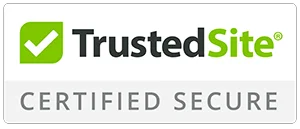
For many non-citizens in the US, obtaining an Employment Authorization Document (EAD) is extremely important. The EAD card, also called a ”work permit,” is proof that an individual can legally work in the U.S.
It is a document needed by nonimmigrants, asylum seekers, and certain visa holders. It allows them to work while residing in the United States.
Let’s discuss the eligibility requirements, categories, and processes involved in applying for an EAD card. These requirements need to be understood regardless of where you are in your immigration journey.
Understanding the EAD Card
What is an Employment Authorization Document (EAD)?
The EAD card grants eligible non-U.S. citizens permission to work legally in the United States. The card is issued by the U.S. Citizenship and Immigration Services (USCIS).
It is typically valid for a specific period and can be renewed as necessary. Those who qualify for an EAD are placed into various categories depending on their immigration status.
Importance of the EAD Card for Employment
The EAD card is more than just a work permit, it opens the door to job opportunities. These jobs can secure the livelihood of immigrants in the United States.
Employers require this documentation to verify that an individual has the legal right to work. Without this permit, an applicant’s ability to gain employment is severely limited.
Types of EADs Available
USCIS issues three main types of EADs:
- Initial EAD: For those applying for the first time.
- Renewal EAD: For those whose EAD is expiring.
- Replacement EAD: For those who lost their EAD or had it stolen.
EAD vs Green Card: What’s the Difference?
Both documents grant work authorization. However, a Green Card provides permanent residency. An EAD card is temporary.
Essentially, an EAD is tied to the individual’s immigration status or pending application (such as a Green Card application). The EAD card does not grant residency but allows the holder to work legally during their stay in the U.S.
When and Why Would You Need an EAD?
An EAD is necessary for nonimmigrants. Specifically when their visa or status does not automatically grant work authorization.
This applies to students, asylum applicants, and refugees. It also applies to certain nonimmigrant visa holders, like the H-4 spouse of an H-1B visa holder.
Who is Eligible for an EAD?
Eligibility Categories for EAD
Different categories of non-U.S. citizens qualify for an EAD. It depends on their visa status, pending applications, or special circumstances. You need to be aware of the category you fall into for your application to be a success.
Category 1: Asylum Seekers and Refugees
Asylum seekers with a pending Form I-589 (application for asylum and withholding of removal) application can apply for an EAD.
This can be done once an asylum seeker’s case has been pending for 150 days. Similarly, refugees granted asylum automatically qualify for work authorization without a separate EAD application.
Category 2: Family-Based and Marriage-Based Applicants
This applies to those who have filed for an adjustment of status through Form I-485. This form is typically related to family or marriage-based applications.
Applicants can apply for an EAD while waiting for their Green Card approval. The EAD allows them to work legally while their immigration status is processed.
Category 3: Students (F-1, M-1, J-2)
International students on an F-1 visa are eligible for some trainings that places them in this category. These trainings are; Optional Practical Training (OPT) or Curricular Practical Training (CPT).
This allows them to work in the U.S. under certain conditions. Spouses and dependents of J-1 students (i.e. J-2 visa holders) can also apply for an EAD.
Category 4: Nonimmigrant Visa Holders
Certain nonimmigrant visa holders, such as those on L-2 and H-4 are eligible for work authorization. L-2 visas are for spouses of L-1 visa holders and H-4 visas are for spouses of H-1B visa holders.
Others may need specific employer sponsorship for work authorization. In addition to that, applicants might still need an EAD if they wish to work for any employer.
Category 5: Temporary Protected Status (TPS) Holders
Non-citizens from countries designated under Temporary Protected Status (TPS) can apply for an EAD. However, they have to be residing in the U.S.
TPS designations are granted due to conditions like armed conflict or natural disasters in the applicant’s home country.
Spouses of E-1, E-2, and E-3 Visa Holders
The spouses of E-visa holders (those involved in international trade or investment) may apply under specific visa categories. Unlike H-4 spouses, they are not automatically authorized to work but must obtain an EAD.
Deferred Action for Childhood Arrivals (DACA) Recipients
Individuals who qualify under DACA are eligible for an EAD. DACA recipients must renew their EAD regularly. They also have to file the renewal application before their current EAD expires. They must do this to avoid any gaps in employment authorization.
Work Authorization for Certain Nonimmigrants
Nonimmigrants like B-1 domestic servants or NATO personnel may qualify for employment authorization under specific circumstances. Their eligibility depends on their visa type and the work they will be doing in the U.S.
How to Apply for an EAD
Filing the EAD Application: Form I-765
To apply for an EAD, non-citizens must submit Form I-765. This form is submitted along with the appropriate filing fee and required documents to USCIS. The information provided on this form should be accurate and complete to avoid delays or denials.
Let’s discuss the application process in detail;
Step 1: Gather Necessary Documents
Applicants must submit proof of their immigration status. This includes copies of their visa, I-94 travel records, and passports. Additionally, two passport-sized photos and previous work permits (if applicable) are required.
Step 2: Completing Form I-765
Form I-765 asks for detailed information about your immigration status and employment eligibility category. Mistakes in this form can lead to delays, so double-check all information before submitting.
Step 3: Pay the Filing Fee or Request a Waiver
Applicants are required to pay whatever the updated costs are for filing fees for Form I-765. Certain applicants must also pay an additional biometric fee. Those who cannot afford the fee may file a Form I-912 to request a fee waiver.
Step 4: Submitting the Application
Applicants can mail their Form I-765 and supporting documents to the appropriate USCIS service centre or apply online. Ensure that you use the correct USCIS address. Mailing errors can result in significant delays.
Step 5: Attending a Biometrics Appointment
After an application is processed, USCIS may require applicants to attend a biometrics appointment. At this appointment, the applicant’s fingerprints and photos will be taken. Missing this appointment can lead to a denial of the EAD.
Step 6: What to Do After Filing
It’s important to track your application’s progress after submission. You can check the status on the USCIS website using the receipt number provided after submission.
Make sure to keep all receipts and communication from USCIS for future reference. If your application exceeds the expected processing time, you can file an inquiry.
Step 7: Receiving Your EAD
Once your EAD is approved, USCIS will mail it to you. Use your current mailing address throughout the application process. If the card contains any errors, notify USCIS immediately for correction.
Step 8: Handling a Denied EAD Application
If your EAD application is denied, USCIS will provide a written explanation. Denials may occur due to incomplete applications, incorrect eligibility claims, or missing documentation.
Consult an immigration attorney to understand the reason for the denial. An attorney will also explore your options for appeal or reapplication.
Expedited Processing Eligibility
Some applicants may qualify for expedited processing if they meet specific criteria, such as severe financial loss, urgent humanitarian reasons, or government interests.
Such an applicant must File an expedited request. The USCIS should also be contacted directly, and all supporting documentation must be submitted.
Impact of Delays
Delays in processing are common, especially given the growing USCIS backlog. There are options to expedite processing under certain circumstances.
These circumstances include emergency, financial hardship, or government interest. However, most applicants will need to wait for the standard processing timeline.
How to Maintain Your Work Authorization?
Individuals with expiring EADs need to be prompt in applying for renewals to avoid a lapse in work authorization. Let us explore the processes involved in maintaining an EAD.
Renewing an Expiring EAD
You can apply for an EAD renewal up to 180 days before the current card’s expiration date. During this process, a new Form I-765 is filed, along with the necessary fees or fee waiver requests.
Automatic EAD Extensions
Certain applicants, such as those with pending asylum cases, may qualify for automatic EAD. These extensions can be up to 540 days. Provided they filed their renewal application before the current EAD expires.
Replacing a Lost or Damaged EAD
If your EAD is lost, stolen, or damaged, you can request a replacement by filing a new Form I-765. Be sure to submit all supporting documentation and the appropriate fee.
EAD Extensions for TPS Holders
Temporary Protected Status (TPS) holders may benefit from automatic EAD extensions for up to 540 days.
This extension is valid as long as the applicant has filed for renewal before their EAD’s expiration. The automatic extension helps to bridge any gaps in work authorization. This is a great step to take while waiting for the final decision from USCIS.
Correcting USCIS Errors
If USCIS issued your EAD with incorrect information, such as a typographical error. You can request a corrected card without paying additional fees. However, this only applies to errors made by USCIS.
Submit a service request explaining the error and return the incorrect card via USPS to the USCIS facility that issued it. It’s important to track your mailing to ensure proper delivery.
Avoiding Gaps in Work Authorization
You should aim to file within 180 days of the expiration date. This will reduce the risk of being unable to legally work due to processing delays.
Categories Eligible for Automatic Extensions
Some key categories eligible for automatic extensions include:
- Refugees (A03)
- Asylees (A05)
- Temporary Protected Status (A12 or C19)
- Spouses of certain nonimmigrant visa holders (A17, A18, C26)
- Pending Adjustment of Status Applicants (C09)
To qualify, applicants must meet the following criteria:
- The Form I-765 must be filed before the current EAD expires.
- The EAD must fall under an eligibility category that allows for automatic extension.
- The applicant should possess Form I-797C. That is, Notice of Action as proof of the pending application This form can be presented to employers as documentation of extended employment authorization.
This automatic extension continues until USCIS decides on the renewal application. Or until the 540 days come to an end.
Get Guidance on Your EAD Application
For non-citizens aiming to build a career in the U.S., securing an EAD card is a natural next step. The process can be complex and depends on your specific immigration status.
However, you can improve your chances of success by taking certain actions. Such as understanding the eligibility requirements and ensuring that your application is complete and accurate.
A Queens Immigration Attorney can provide tailored advice on the category you belong to. Consulting with an experienced attorney can help you decode the often-complicated world of immigration law.
Don’t risk delays with your work authorization, contact a Queens Immigration Attorney today to get started!




